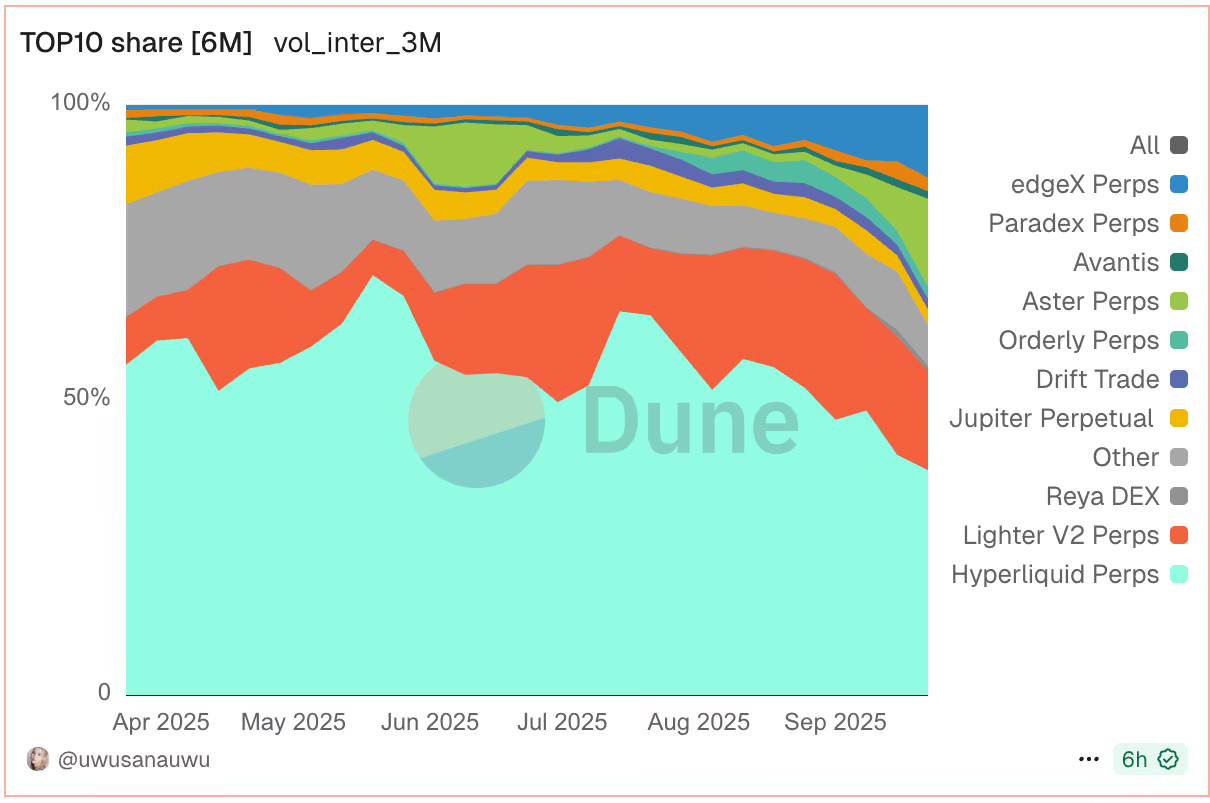Hyperliquid’s Perpetual Share Plummets to 38% as Aster and Lighter Seize Market Ground
Hyperliquid's dominance in perpetual contracts craters as competitors carve up the landscape.
Market Share Freefall
Hyperliquid's perpetual market share nosedived to just 38%—a staggering collapse from previous highs. The platform's grip on traders slips while rivals capitalize on shifting sentiment.
New Contenders Emerge
Aster and Lighter execute aggressive growth strategies, grabbing territory in the hyper-competitive derivatives arena. Their infrastructure upgrades and fee structures clearly resonate with institutional flows.
Liquidity Migration Patterns
Traders pivot toward platforms offering deeper liquidity pools and innovative perpetual products. The 38% figure signals a fundamental redistribution of market power—not just temporary volatility.
As one veteran trader quipped: 'Even traditional finance wouldn't blink at such concentration—but in crypto, empires crumble between coffee breaks.' The perpetual wars intensify while Hyperliquid scrambles to reclaim lost ground.

The on-chain perpetual market has experienced rapid growth. All platforms combined have registered a cumulative trading volume of nearly $700 billion over the past four weeks, with activity reaching $42 billion in the last 24 hours alone.
The number of protocols has grown significantly from just two in 2022 to over 80 as of today. This expansion perfectly exemplifies capitalism at work: a thriving market attracts a flood of new entrants, increasing competition and eroding the market share and profitability of early pioneers.
The absence of traditional barriers to entry or exit, a key feature of the crypto market, allows anyone with the technical know-how to launch new protocols and compete.
Lately, a war of sorts has been unfolding between Hyperliquid and Aster. Last week, Hyperliquid listed Aster's native token ASTR, allowing users to long or short the token with 3x leverage. On Monday, Aster responded by offering Hyperliquid's HYPE perpetuals with 300x leverage.

